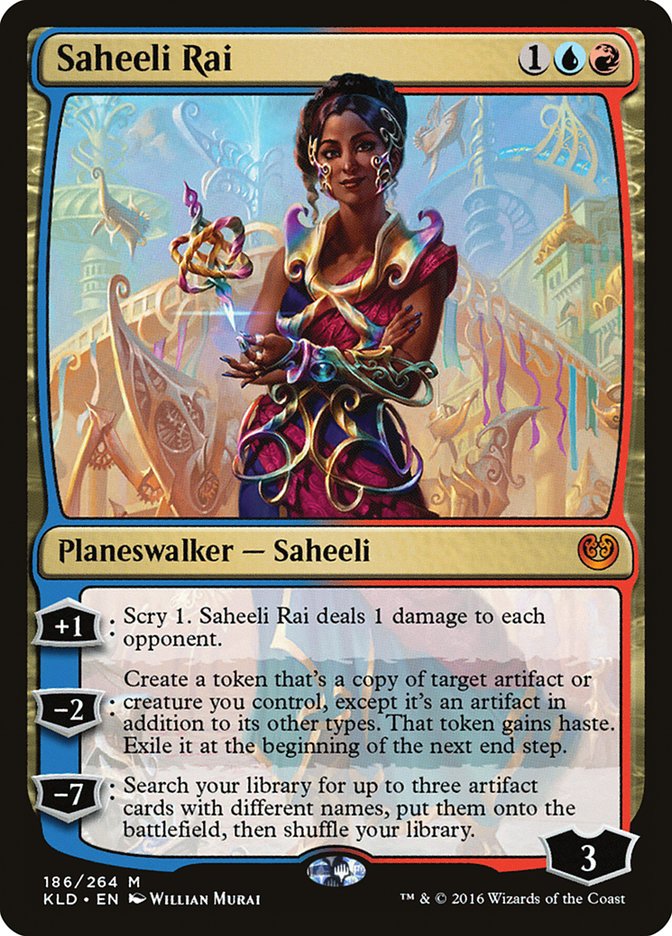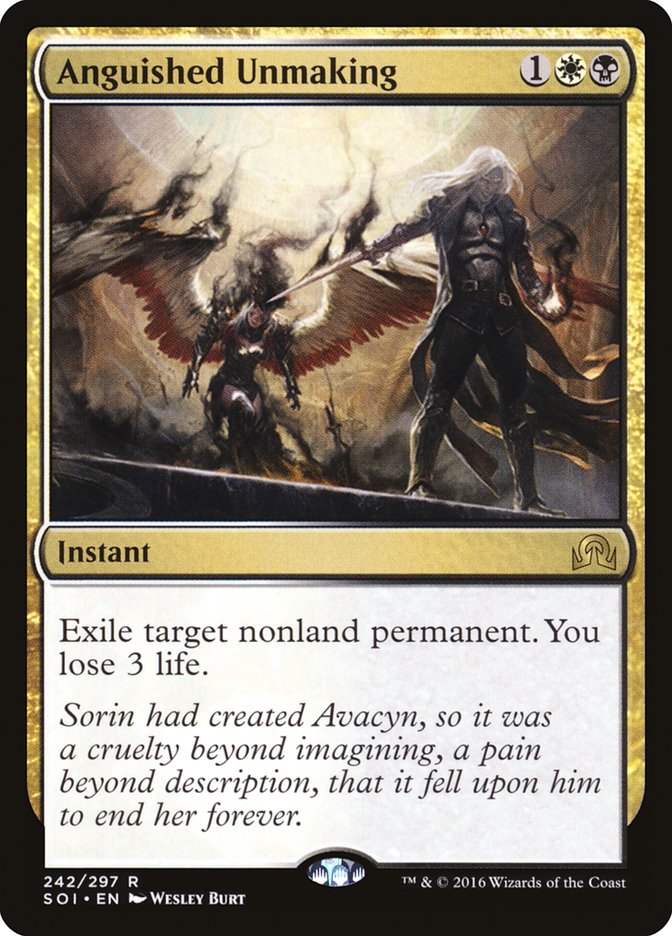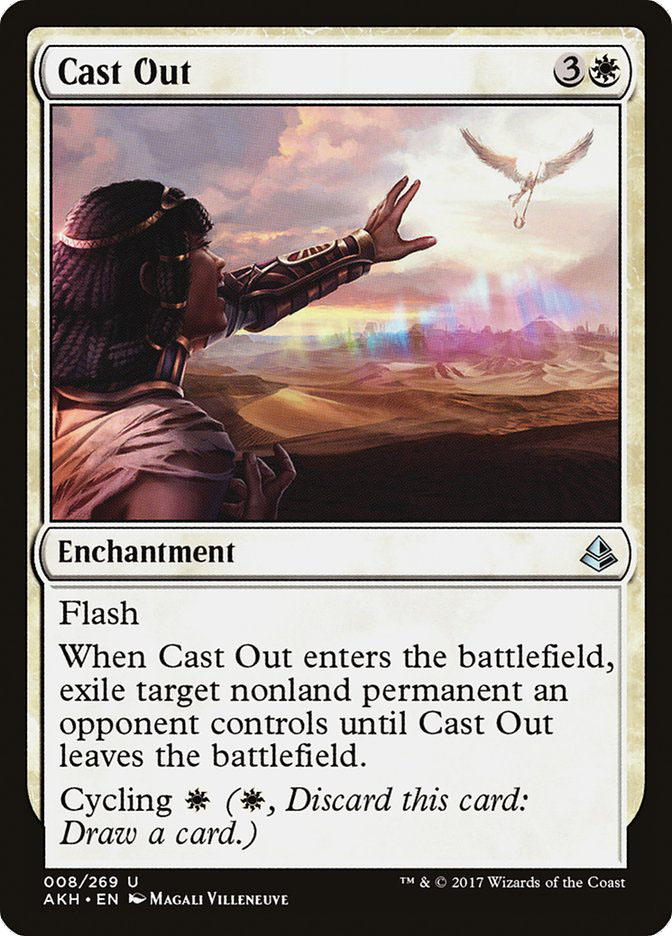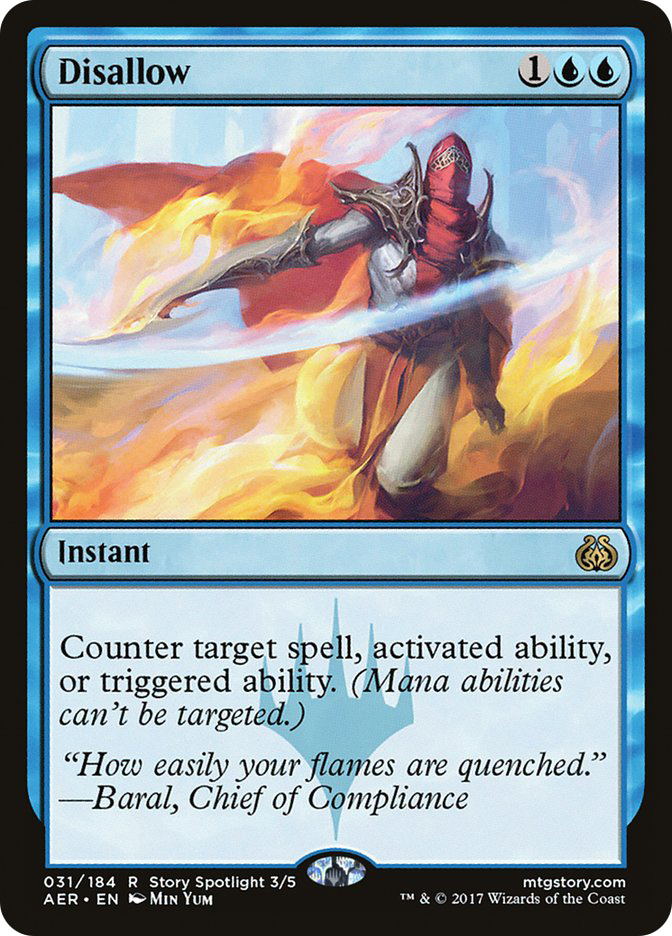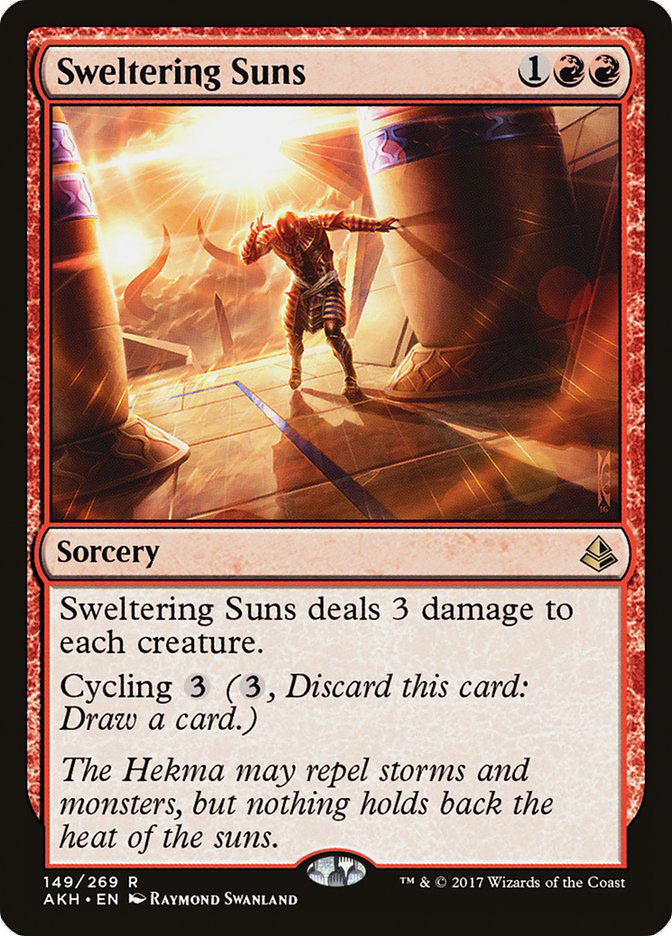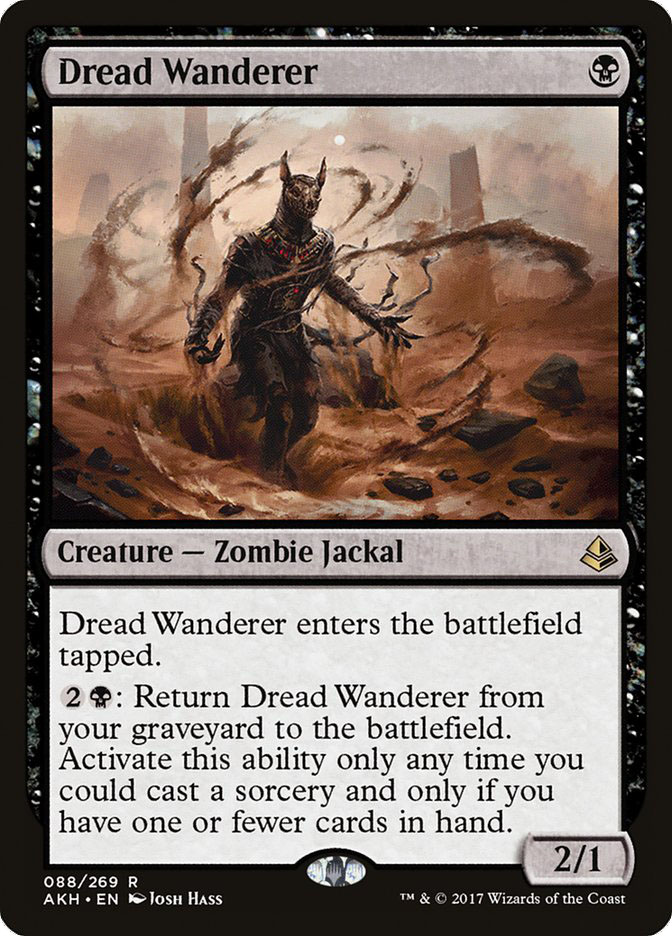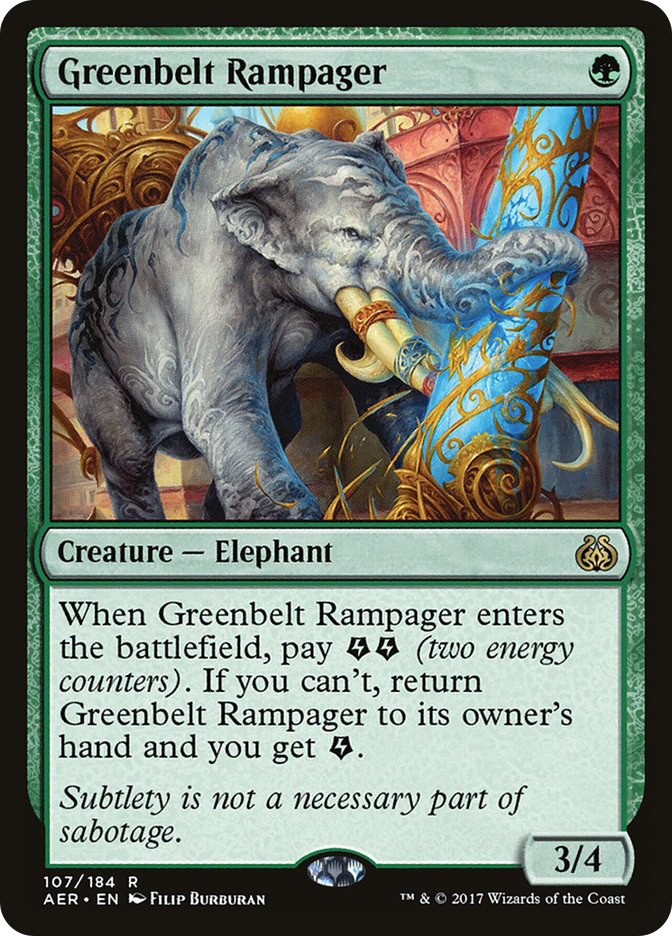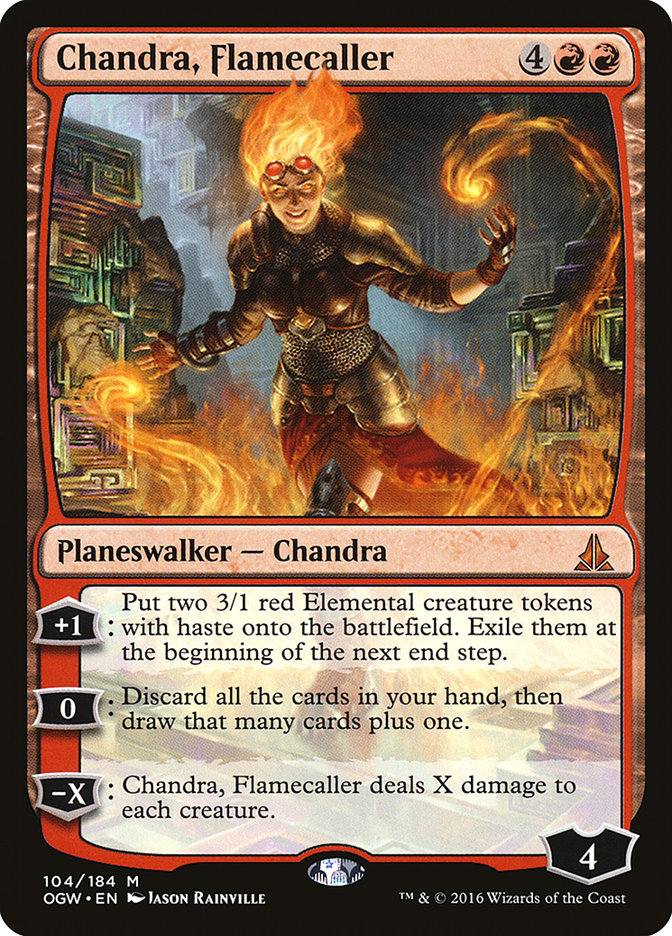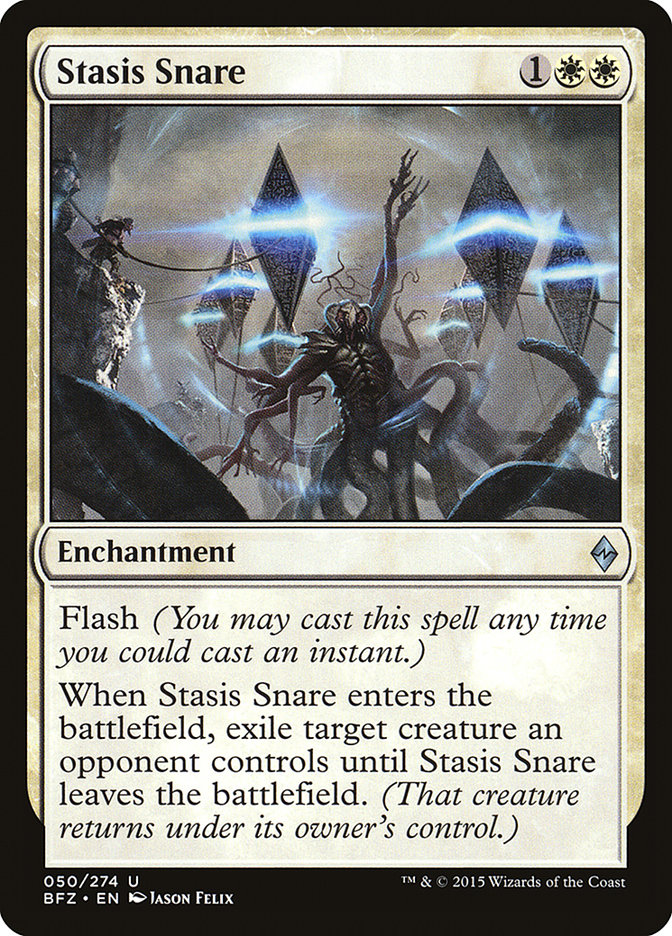Pro Tour Amonkhet is in the books and it’s time to address a very
important question: What in the world happened?
Two weeks ago I
wrote
about why we shouldn’t worry about this Standard format being dominated by
Mardu Vehicles, despite the results of #SCGATL.
Today, I could very well be writing an article about the potential for
Mardu Vehicles to ever regain the limelight. The deck failed to crack the
top 8, only had two pilots manage to go 8-2 in the Constructed and boasted
an unimpressive, below average day two conversion rate of 58%. All in all,
that’s quite the fall from glory for a deck that managed to land five of
the top 8 slots at the last major event.
Still, magnitude aside, Mardu’s fall was an expected
result. The real surprise from Pro Tour Amonkhet for me was that
the agents of Mardu’s downfall were Cryptbreaker and Ulamog, the Ceaseless
Hunger, not Torrential Gearhulk and Ishkanah, Grafwidow. The sudden
departure of Saheeli Rai combo from the format meant that Standard was
poised to polarize, to develop true aggro and control decks out of the
homogenous midrange mush that Four-Color Saheeli had forced the format
into. Pro Tour Amonkhet saw plenty of aggro with the rise of
Mono-Black and B/W Zombies, but control was nowhere to be found.
U/R Control was the only deck playing four Torrential Gearhulk to go 8-2 or
better, and only one pilot managed to do so. The only copies of Ishkanah,
Grafwidow to see play in the upper brackets of Pro Tour Amonkhet
did so alongside Aetherworks Marvel and Ulamog, the Ceaseless Hunger.
Clearly, these cards were unable to step up and be the backbone of control
strategies in the format. To understand why, we need to explore the deck
that rose to take Four-Color Saheeli’s place: Aetherworks Marvel.
From Infinite Cats to a Single Eldrazi
Two things did well at the Pro Tour: aggressive strategies and Aetherworks
Marvel. Marvel decks existed before the Felidar Guardian ban, but they were
borderline fringe, and certainly not universally respected as a real
strategy. Well, that sure changed in a big way.
In some ways all the Felidar Guardian ban did was trade in one turn 4 combo
deck for another. It’s been said before, but while a turn 4 Ulamog, the
Ceaseless Hunger doesn’t actually end the game on the spot, it might as
well. Still, despite both being able to effectively end the game as early
as the fourth turn, the effect these two decks have on the format at large
couldn’t be more different.
Creatures (10)
Lands (22)
Spells (28)
- 1 Negate
- 1 Kozilek's Return
- 4 Aetherworks Marvel
- 4 Woodweaver's Puzzleknot
- 4 Harnessed Lightning
- 4 Attune with Aether
- 4 Glimmer of Genius
- 3 Dissenter's Deliverance
- 3 Censor
Sideboard

Four-Color Saheeli forced the format down to the ground. You had to play to
the battlefield quickly and pressure the Saheeli deck as much as possible
while leaving relevant interaction up for the combo every turn past the
fifth. The fact that every non-Saheeli deck had to do this forced the rest
of the format into a sort of midrange arms race, competing to see who could
go as big as possible while still being low to the ground enough to have a
tolerable Four-Color Saheeli matchup.
It was the necessity of interacting that promoted this midrange existence
for the format, but there is no interacting with Aetherworks Marvel. For
the most part, decks just can’t afford to play large numbers of the sort of
highly specialized answers that are necessary to remove an Aetherworks
Marvel or an Ulamog, the Ceaseless Hunger. And let’s be honest: even if you
can deal with these troublesome permanents, the damage is likely already
done.
But the difficulty in interacting with Aetherworks Marvel is only one piece
of the puzzle. The game plan against Four-Color Saheeli was to apply
consistent pressure while ensuring that you couldn’t be combo-killed. Note
that the plan wasn’t necessarily to win quickly by applying extreme amounts
of pressure. Slow and steady won the race in that matchup, and it was more
important to be protected from the combo than to win a turn sooner. As long
as forward progress towards winning the game was being made every turn, the
game could last a long while and everything still be fine.
Aetherworks Marvel, however, is an entirely different animal. Even if you
can successfully interact with it, you can’t afford to let the game go
long. Counting how many more turns were left until Ulamog, the Ceaseless
Hunger could be hard cast by the Marvel player was a common theme for
coverage throughout Pro Tour Amonkhet and is something that always
needs to be in the forefront of your mind when playing or thinking about
the Aetherworks Marvel matchup.
It’s very easy to write-off the possibility of a ten-mana spell being cast
against you as something that is unlikely to happen. It’s even easier to
decide it’s not something you want to skew your deck to be able to beat,
since the idea of it happening sounds so comical. But the truth is that if
you are playing a controlling deck looking to stop the Marvel deck from
cheating its Eldrazi titan in, you better make sure you dedicate some
resources to actually winning the game, or ten mana will sneak up on you
before you know it.
The Problem with Removal Spells
Midrange decks live and die by their removal spells. That’s how it has
always been. Being able to remove early aggressive creatures without taking
an excessive amount of damage is what allows midrange decks to live until
the part of the game where their slower, more powerful cards can take over.
But this reliance on removal is contributing to their weakness to
Aetherworks Marvel decks.
Every removal spell drawn is one less card that is going towards killing
the Marvel player before they manage to put an Ulamog on your head, whether
through Aetherworks Marvel or tapping ten lands the old-fashioned way.
Hopefully that removal spell can slow them down in some small way, maybe by
sniping a Servant of the Conduit or something.
But take a look at this again:
Creatures (10)
Lands (22)
Spells (28)
- 1 Negate
- 1 Kozilek's Return
- 4 Aetherworks Marvel
- 4 Woodweaver's Puzzleknot
- 4 Harnessed Lightning
- 4 Attune with Aether
- 4 Glimmer of Genius
- 3 Dissenter's Deliverance
- 3 Censor
Sideboard

Many of the best performing Aetherworks Marvel decks at Pro Tour Amonkhet weren’t even playing Servant of the Conduit. Sure, your
removal spell can get a Rogue Refiner out of the way or snipe a Whirler
Virtuoso, but you’re going to be hard-pressed to consistently turn either
of those scenarios to your advantage. After all, both of those creatures
have already done their job by the time they enter the battlefield.
It’s a pretty miserable catch-22 for the aspiring midrange player. You need
removal spells to have game against aggro decks but they will be your death
against Marvel. The removal that actually plays against Marvel, like
Anguished Unmaking, Cast Out or Disallow, is heinously bad against
aggressive decks.
This isn’t a new problem in Magic. This has always been one of
midrange’s struggles against control strategies. The difference is that
Marvel isn’t a true control deck; it’s closer to a combo deck and it has
the ability to effectively end the game on turn 4. That exacerbates the
problem for midrange players, but there’s worse news: in a rare Magic occurrence, Marvel is putting this removal squeeze on
control decks too.
Even more than midrange decks, control decks need their removal spells.
They need more than midrange decks do, as the stage of the game in which
they are seeking to win is even later and it’s rare for them to establish
the sort of battlefield presence that would invalidate the material of the
aggro decks. But all this removal means it’s exceedingly difficult for them
to win the game before Ulamog hits the battlefield, which ends up meaning
it’s pretty hard for them to win the game at all.
Midrange is successful when it has game against both the big and the small
of a given format. It is unsuccessful when it must choose whether it wants
to be able to beat smaller decks or bigger decks. Right now, it looks like
Aetherworks Marvel is putting both traditional midrange and control decks
into that spot of having to pick whether they want to punch up or punch
down and as a result, these strategies have been squeezed out of
prominence.
The Path Forward for Midrange and Control
The middle of the pack is a hard place to be right now. It’s really weird
that right now the middle means anything above super aggressive decks and
below Ulamog, the Ceaseless Hunger, but that’s the world we live in.
Something just doesn’t feel right about calling a Disalllow into Glimmer of
Genius into Torrential Gearhulk gameplan too midrange for the format.
Let’s look at the paths you can take to beat Aetherworks Marvel. Or, more
accurately, the windows to win the game available to us.
First, we can try to win before the Marvel deck manages to activate its
namesake card. This is what the aggressive decks of the format, like
Zombies and G/B Energy, are trying to do. They want to attack, attack,
attack, and end the game before Aetherworks Marvel manages to spin into
Ulamog, the Ceaseless Hunger.
To do this, they are playing with the fail rate of the Marvel deck. Winning
before turn 4 just isn’t a realistic dream for an aggressive strategy in
this Standard environment, and that’s not what these decks are trying to
do. Instead, they are writing off the games where the Marvel deck manages a
turn 4 Ulamog and trying to win the games where they can’t find a Marvel
until turn 6 or their first couple spins don’t find Ulamog. This is an
effective plan by the numbers but one prone to miserable losses when the
Marvel player just has it.
Next up, we can aim to win the game by interacting with their Aetherworks
Marvel and then ending the game before they are able to cast Ulamog from
their hand. This is a narrow path to walk, but it’s theoretically possible.
Interacting with Aetherworks Marvel is difficult but not impossible. Blue
has a relatively easy time of it with counterspells, and if we’re willing
to simply hope that the first spin whiffs, many other colors have ways to
take the Aetherworks Marvel off the battlefield.
Killing them before they can hardcast Ulamog is the real trick. The high
density of interaction we need to ensure that we can reliably handle their
Aetherworks Marvel plan means that we don’t have the luxury of playing a
wide variety of threats. We probably need to be able to end the game
quickly with one sticky threat. For the most part, that probably means
Planeswalkers. Both Gideon, Ally of Zendikar and Chandra, Flamecaller are
supremely capable of ending games very quickly and are great options if
you’re looking to attack Aetherworks Marvel from this angle.
To round out this timing discussion, the last theoretical window for
victory against Aetherworks Marvel is in the super late game. This would
involve having a late game more powerful than Ulamog, the Ceaseless Hunger
or the ability to answer every Ulamog in their deck. I say theoretical,
because this seems an unlikely proposition to me. Maybe a white Torrential
Gearhulk deck with plenty of Cast Out and Stasis Snare could do it, or
maybe the power of multiplication in Sam Black’s
Anointed Procession deck
is enough. I’m not sure, but this is potentially an avenue of victory worth
exploring.
With this framework, we can see why Mardu Vehicles and Torrential Gearhulk
control decks performed so poorly at Pro Tour Amonkhet. Mardu
Vehicles can win the game before Marvel decks can deploy Ulamog from their
hand, but is unable to interact with their A plan of simply spinning
Aetherworks Marvel. It’s attempting to win in that second window but
without the interaction that allows that second window to be reached.
Vehicles either needs to speed up, become more aggressive and try to win in
the first window, or it needs to start playing more relevant Aetherworks
Marvel interaction.
It’s worth noting that both of the Vehicles lists that went 8-2 at the Pro
Tour were aggressive takes playing Veteran Motorist over Walking Ballista.
They also both played less removal in the main than the lists from #SCGATL,
effectively dodging the brunt of the removal squeeze.
Creatures (20)
- 2 Archangel Avacyn
- 4 Thraben Inspector
- 2 Pia Nalaar
- 4 Scrapheap Scrounger
- 4 Toolcraft Exemplar
- 4 Veteran Motorist
Planeswalkers (4)
Lands (24)
Spells (12)

Conversely, Torrential Gearhulk decks are excellent at stopping the Marvel
spins but terrible at winning the game before the Marvel deck simply
reaches ten mana. As good as Torrential Gearhulk is, it can’t win the game
before Ulamog in the face of any interaction at all, which the Marvel decks
do have. Further, it can’t even come close to beating Ulamog in a head to
head fight, leaving the Torrential Gearhulk control decks in a very poor
position once Ulamog does land.
To win in that second window, Torrential Gearhulk decks need to incorporate
more threats. Gideon, Ally of Zendikar would be my pick, but it’s possible
that Chandra, Flamecaller is a better card against the rest of the field.
Either way, ending the game before Ulamog seems a much safer bet than
trying to answer every haymaker the Marvel deck can throw in the super late
game.
Midrange and Control in Amonkhet Standard have to walk a narrow
tightrope, and it looks like no one was able to figure out how to do so
effectively in time for Pro Tour Amonkhet. Whether that’s because
it can’t be done or because there wasn’t enough time and info to do so
remains to be seen, but my money’s on midrange strategies making a comeback
as the format wanes on.



